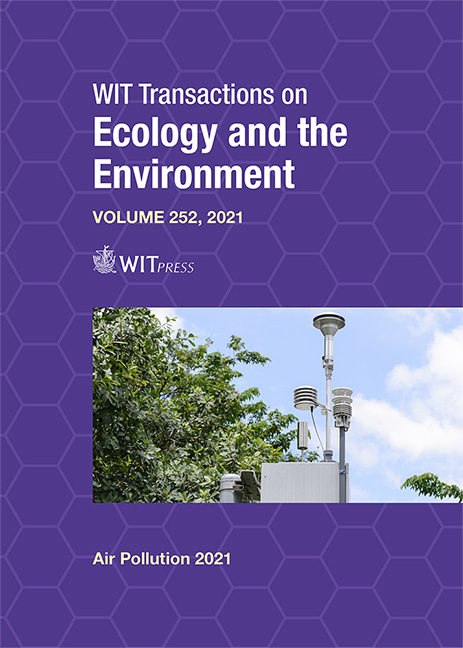EFFECT OF VEHICLE LIGHT ON THE NANOSTRUCTURE OF PARTICULATE MATTERS EMITTED FROM DIESEL AND GASOLINE VEHICLES
Price
Free (open access)
Transaction
Volume
252
Pages
9
Page Range
125 - 133
Published
2021
Paper DOI
10.2495/AIR210121
Copyright
Author(s)
MEISAM AHMADI GHADIKOLAEI, PAK KIN WONG, SHOU HAO CHEN, KAR WEI NG, JIN CHENG XU
Abstract
Particulate matters (PMs) are currently one of the main threats to human health and the environment. The transportation sector, particularly diesel and gasoline vehicles, among others, has a significant contribution to the global PM level. While the PMs from vehicles have serious and dangerous negative impacts on human health due to their toxicity components along with their small diameters (penetrating more deeply into the human’s body). Therefore, researchers are seeking some solutions to reduce the concentration of PMs from vehicles as well as investigate those parameters affecting the PM properties upon their release from the exhaust pipes. Vehicle light, among others, could be a factor for changing the PM properties, while no comprehensive study can be found in the literature in this field. This study is therefore presented to explore the impact of vehicle light emitted from halogen headlights (as an abundant one available on the market) on the nanostructure of both fresh and aged PMs from a diesel vehicle under an idle condition (fresh PMs), a diesel particulate filter (aged PMs), and a gasoline vehicle exhaust pipe (engine was off, aged PMs). The samples were exposed to the light for 6 hours at a distance of 0.1 m. Based on the results obtained from a scanning transmission electron microscope (STEM) and a scanning electron microscope (SEM), the vehicle light changes the nanostructure of PMs by reductions in fringe length (25.0%, 8.4%, and 7.1%) and fringe tortuosity (3.0%, 2.9%, and 1.8%), and enlargements in fringe separation distance (3.0%, 2.3%, and 1.9%), core size/shell size ratio (67.6%, 36.9%, and 62.1%), and core size/particle size ratio (38.4%, 25.0%, and 33.3%), resulting in enlargements in particles diameters from 21.2 to 30.4 nm, from 32.3 to 33.5 nm, and from 27.1 to 29.8 nm for all three samples tested, respectively.
Keywords
air pollution control, environmental issue, human health, properties of particulate matters, vehicle headlights, vehicular emission control





